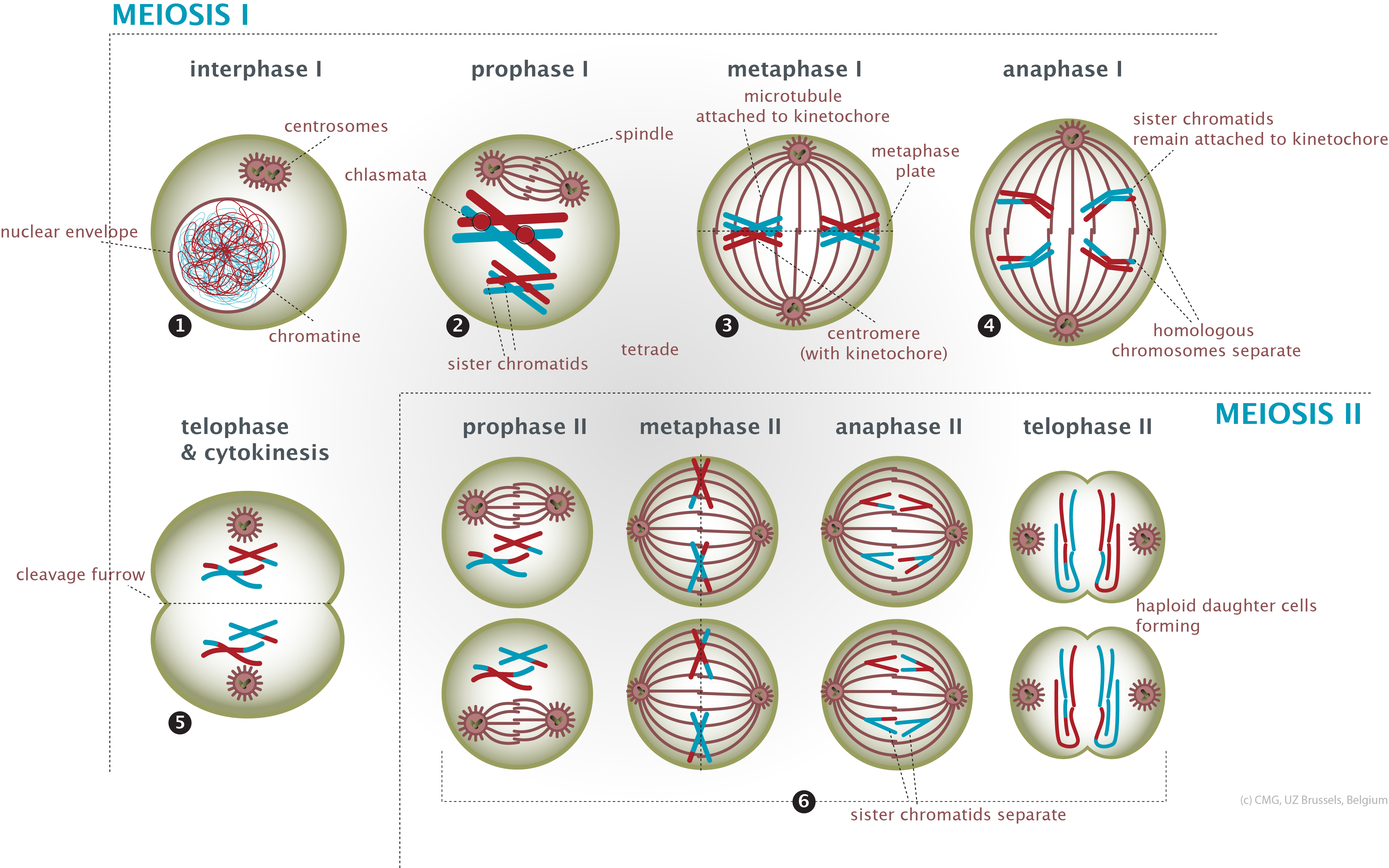DNA transfer
Our somatic cells renew themselves and multiply by dividing. The nucleus, however, cannot simply be divided in two, because the number of chromosomes (which contain all the genetic information) has to be passed on unchanged from cell to cell. They are therefore copied and consequently duplicated - during the phase of cell division that we call mitosis - and each pair is then divided between the two cells. This happens in all our somatic cells, including those from which the embryo develops after the egg cell has been fertilised by a sperm cell.
These two, however, are the only cells in our body that come into being in a different way. Since sperm and egg cells must contain only 23 chromosomes each (rather than 23 pairs of chromosomes) they are the result of a process of reduction division (or meiosis). First the maternal and paternal chromosomes both multiply and then they join together in pairs, exchanging material in the process. We call this phenomenon recombination. After reduction division, the recombined chromosomes are shared out at random between the newly created cells.
All in all, cell division is a complex process in which the mechanisms involved in copying and recombination are responsible for variations in DNA. It is these (sometimes small and sometimes larger) variations in our DNA that make each one of us unique. Sometimes they result in 'errors' and these may form the basis for specific disorders.
